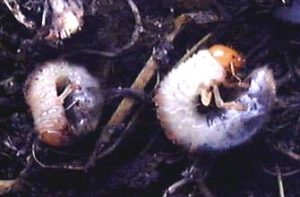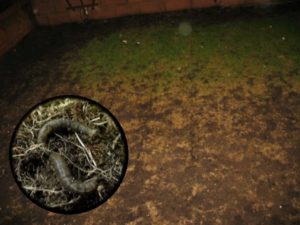1 January 1970
Lawn Pests – Leatherjackets and Chafer Grubs
When the lawn looks good, the garden looks good too, however, in recent years BOTH Chafer Grubs and Leatherjackets have flourished (due to milder winters and autumns) and BOTH these pests can devastate a lawn. The best time to treat both pests is in the autumn (Sept / October), so treat NOW.
The symptoms of a Chafer Grub and Leatherjacket attacks are very similar, so is difficult to identify, which pest you have i.e. grass growth slows and yellow patches appear PLUS the grass easily pulls up with little or no roots. The best way to identify the pest is by cutting a 15cm x15cm section of damaged turf on three sides and peeling back the sod. Shake the sample or probe through the soil with a knife to dislodge the grubs/larvae. The pests will not be distributed evenly, so examine other parts of the lawn to find the extent of the infection.


Treating Chafer Grubs – Chafer Grubs can devastate a lawn PLUS birds and animals digging up and pulling at the lawn to get at the grubs to eat can do even more damage. If your grass growth slows, yellow patches appear or if it is easily pulled up, with little or no root growth then check for grubs. Control chafer grubs naturally, by trapping the adult beetles with our Adult Chafer Beetle Trap and then apply Nemasys® Chafer Grub Killer to control the grubs.
